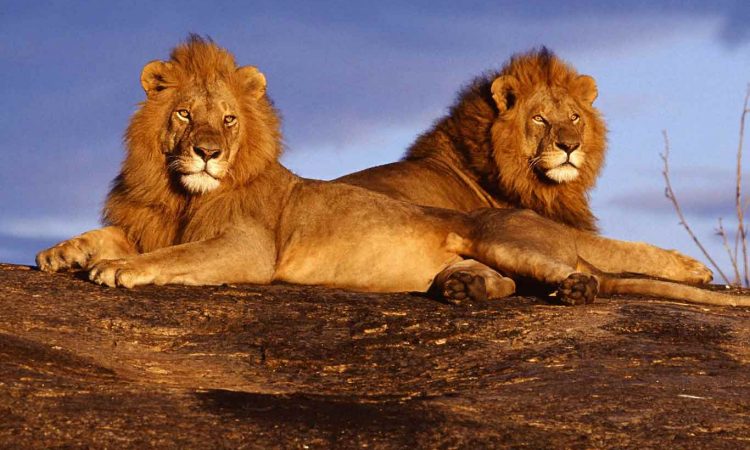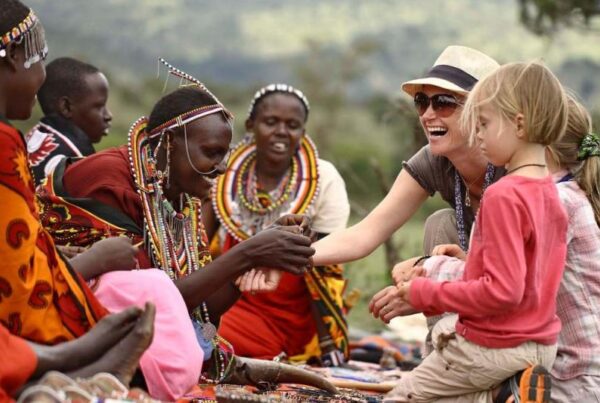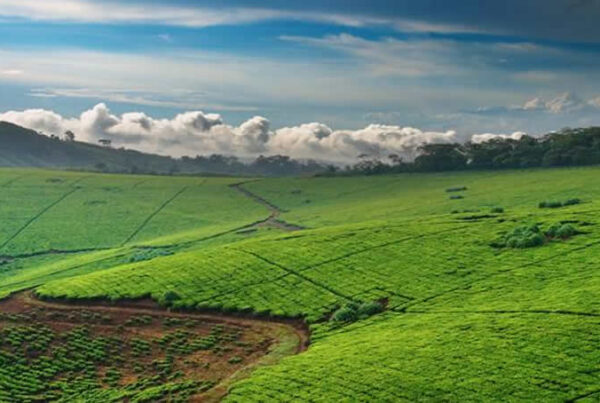Comparing Kidepo with Serengeti: Why Uganda’s Wild North Stands Out
Two Giants of the Safari World
In the realm of African safaris, few names are as celebrated as the Serengeti, a park whose vast plains have become synonymous with the classic safari experience. Yet, tucked away in the remote northeastern corner of Uganda lies another wilderness, the Kidepo Valley National Park, a place often described as the country’s most dramatic and least disturbed safari destination. While the Serengeti is famous for its sweeping savannahs and the annual wildebeest migration, Kidepo is revered for its isolation, authenticity, and unspoiled landscapes that offer visitors an experience of raw wilderness unmatched elsewhere in East Africa.
The comparison between these two destinations is not a matter of superiority, but rather of highlighting distinct qualities that appeal to different kinds of travelers. Serengeti may embody the grandeur and scale of Africa’s wildlife spectacles, but Kidepo offers something rare in modern safari tourism: intimacy, solitude, and immersion in a truly wild landscape.
This article delves into the landscapes, wildlife, culture, and visitor experience of both parks, and explains why Uganda’s wild north, though less famous, often stands out as the hidden jewel of African safaris.
Geographical Identity of the Two Parks
The Expansive Plains of Serengeti
The Serengeti in northern Tanzania is globally renowned for its size and diversity. Covering nearly 30,000 square kilometers when combined with adjacent conservation areas, it stretches endlessly, providing habitats for vast herds and apex predators. Its terrain is defined by open savannah grasslands, dotted with acacia woodlands and rocky outcrops, offering one of the most iconic safari backdrops in the world. The park has been recognized as a UNESCO World Heritage Site, cementing its place among the world’s natural wonders.
The Remote Wilderness of Kidepo
In contrast, Kidepo Valley National Park, though much smaller at 1,442 square kilometers, embodies a rugged beauty that sets it apart. Nestled between the borders of South Sudan and Kenya, it lies far from Uganda’s mainstream safari circuits. Its terrain is a dramatic combination of savannah plains, acacia woodlands, and mountainous backdrops, with the Morungole ranges framing the park’s northern boundary. The remoteness of Kidepo ensures that its landscapes remain unspoiled, while the valleys of Narus and Kidepo serve as lifelines for both wildlife and visitors, offering some of the most rewarding safari opportunities in Africa.
While Serengeti impresses through sheer size and scale, Kidepo’s appeal lies in its geographical seclusion and raw beauty, where every landscape feels untouched and every encounter seems deeply personal.
Wildlife Abundance and Diversity
The Serengeti’s Spectacle of Scale
The Serengeti is justly famous for the Great Migration, where over a million wildebeest, accompanied by zebras and gazelles, move in a circular journey across its plains in search of fresh grazing. This spectacle, visible from the ground and air, is unmatched in its scale and drama. It attracts not only tourists but also predators such as lions, leopards, cheetahs, and hyenas, creating one of the greatest predator-prey dynamics on earth. The Serengeti is also home to elephants, giraffes, buffaloes, and numerous antelope species, ensuring that game drives rarely lack activity.
Kidepo’s Unique Assemblage of Species
Kidepo, on the other hand, offers wildlife diversity that cannot be easily replicated elsewhere. While smaller in scale, it supports over 77 mammal species and more than 470 bird species. The Narus Valley is known for large herds of elephants, buffaloes, and antelopes, while predators such as lions, cheetahs, and leopards roam freely. Unlike Serengeti, certain species unique to arid and semi-arid habitats thrive here, including the greater kudu, cheetah populations adapted to dry grasslands, and bird species that are rare in other parts of Uganda.
What makes Kidepo particularly distinctive is the quality of wildlife encounters. With fewer tourists, sightings often feel exclusive, with lions lounging on rocky outcrops or giraffes crossing golden plains in complete silence, interrupted only by the sounds of the wild. It is not the scale of numbers that defines Kidepo’s wildlife, but the intimacy and authenticity of the experience.
Visitor Experience: Solitude versus Spectacle
The Serengeti’s Popular Appeal
The Serengeti is undoubtedly one of Africa’s busiest safari destinations, attracting thousands of visitors each year. Game drives are often accompanied by convoys of safari vehicles, particularly during the migration season. The infrastructure is well developed, with a wide range of lodges, camps, and airstrips, ensuring accessibility and comfort. While this popularity ensures accessibility for travelers of all types, it also means that experiences can sometimes feel shared rather than private. The scale and spectacle are unforgettable, but they come with the trade-off of crowds and commercialized safari logistics.
The Solitary Charm of Kidepo
By contrast, Kidepo’s isolation ensures that safaris remain deeply personal. Game drives are often conducted with no other vehicles in sight, allowing visitors to feel completely immersed in the wilderness. The lack of crowds means that every sighting feels intimate, every sound of wildlife resonates more deeply, and every sunset over the Narus or Kidepo Valleys feels untouched by human interference.
Accommodation in Kidepo ranges from luxury lodges to tented camps, but all are fewer in number compared to Serengeti, reinforcing the sense of exclusivity. While the journey to Kidepo may be longer and less straightforward, the reward lies in experiencing a truly wild safari that feels private and authentic, something increasingly rare in modern tourism.
Cultural Dimension: Beyond Wildlife
Serengeti and the Maasai
The Serengeti is home to the Maasai people, whose pastoral traditions and colorful attire have become iconic symbols of East Africa. Many cultural tours include visits to Maasai villages, where travelers learn about their cattle-keeping heritage, traditional dances, and community structures. This cultural layer adds depth to the safari experience, connecting wildlife encounters with human history and identity.
Kidepo and the Karamojong
Kidepo offers its own cultural richness through interactions with the Karamojong people, pastoralists whose customs and traditions remain deeply tied to the land. Their lifestyle of cattle herding, traditional architecture, and ceremonial practices provide a fascinating glimpse into a culture that has resisted modern influences. Visiting a Karamojong manyatta (homestead) allows guests to witness rituals, hear stories, and understand a worldview that has shaped the landscape for centuries.
The cultural dimension in Kidepo enhances the safari by offering a rare combination of wildlife and authentic human heritage, a reminder that wilderness and culture are intertwined.
Accessibility and Infrastructure
Ease of Travel to Serengeti
The Serengeti is easily accessible from Arusha, Tanzania’s safari hub. A network of well-maintained roads and airstrips allows for both overland and air transfers. This ease of access has fueled its popularity, making it a favored destination for first-time safari travelers and large-scale tour operators.
The Journey into Kidepo
In comparison, Kidepo is less accessible, a reality that both challenges and rewards the traveler. Reaching the park from Kampala by road requires a journey of nearly twelve hours, passing through diverse landscapes and rural communities. Alternatively, charter flights provide faster access, landing directly at the park’s airstrip. While the journey requires more planning and resilience, the very act of reaching Kidepo reinforces the sense of adventure and sets the stage for an unparalleled wilderness experience.
Conservation and Sustainability
Serengeti’s Conservation Challenges
The Serengeti faces immense conservation pressures due to its size and popularity. Tourism revenue supports anti-poaching and habitat management, but challenges such as human-wildlife conflict, infrastructure development, and mass tourism remain persistent. The balance between conservation and commercialization is delicate, requiring ongoing global attention.
Kidepo’s Preservation through Isolation
Kidepo, though less visited, benefits from its isolation, which has kept its ecosystems largely intact. Fewer visitors reduce ecological pressures, while conservation initiatives supported by Uganda Wildlife Authority focus on maintaining the integrity of the park. Community-based projects with the Karamojong also help to align local livelihoods with conservation, ensuring that the park’s wilderness is preserved for future generations.
The contrast is clear: while Serengeti’s conservation relies heavily on global attention and tourism revenue, Kidepo’s sustainability rests on its remoteness and careful integration with local communities.
Why Kidepo Stands Out
While Serengeti captivates with its grandeur and the drama of migration, Kidepo offers something increasingly rare: silence, solitude, and raw wilderness. It is not a park for those seeking crowds or convenience but for travelers yearning for authenticity and unfiltered encounters with nature. The sense of being alone on a vast savannah, with only the wind and the calls of wildlife breaking the silence, is an experience that elevates Kidepo above many of Africa’s more commercialized safari circuits.
Kidepo stands out because it provides not only wildlife and landscapes but also a feeling of discovery, of stepping into a world that has resisted change, where the rhythms of nature remain untouched and the visitor becomes part of something timeless.
Choosing the Right Safari Experience
The decision between Serengeti and Kidepo is not about one being better than the other, but about the kind of safari one seeks. Serengeti represents scale, drama, and accessibility, while Kidepo embodies intimacy, seclusion, and authenticity. For travelers who seek exclusivity, cultural depth, and the thrill of a truly wild frontier, Kidepo Valley National Park emerges as the place where Africa’s wilderness remains in its purest form.
For those inspired to explore Uganda’s wild north and immerse themselves in the beauty of Kidepo, it is highly recommended to entrust the journey to professionals who understand the terrain, logistics, and cultural connections. To ensure a seamless and unforgettable adventure, travelers are encouraged to book their Africa tours and safaris with WildHorn Africa, a trusted name in crafting journeys that capture the essence of Uganda’s most remarkable wilderness.





 WildHorn Africa – Authentic and unforgettable tours across Africa, guided by local experts who know the land, wildlife, and culture best.
WildHorn Africa – Authentic and unforgettable tours across Africa, guided by local experts who know the land, wildlife, and culture best.


